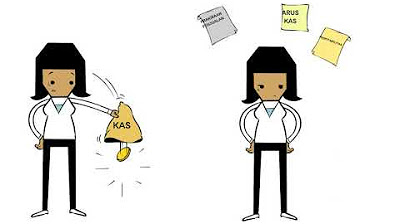IMPROVE operational efficiency by doing THIS ...
Summary
TLDRThis video script delves into enhancing operational efficiency, a critical factor for business success. It emphasizes the importance of intelligent resource allocation, process optimization, and a culture of safety. The script outlines ten actionable measures, including recognizing business operations, prioritizing employees, improving customer service, eliminating bottlenecks, and establishing high standards. It also highlights the significance of continuous improvement, integration solutions, and maintaining a balance in the business network for sustained profitability.
Takeaways
- 😀 Improving operational efficiency is crucial for businesses as it impacts sales, earnings, and customer satisfaction.
- 🚀 Organizations should focus on intelligent resource allocation and high chargeable utilization rates to distinguish themselves in the professional services industry.
- 📈 Operational efficiency is defined as the ratio of a company's input and output, influencing the overall performance of a system.
- 🔍 To boost productivity, businesses need to allocate specialized resources to maximize outcomes and reduce resources required for competent functions.
- 🛒 As companies grow, fulfillment processes must scale to match increased demand, requiring an atmosphere conducive to increased production and efficiency.
- 💬 Improving customer service involves enhancing back-end activities such as vendor relationships and compliance to efficiently fulfill orders and manage customer issues.
- 🔧 Identifying and eliminating bottlenecks through reporting and analytical tools can help businesses uncover inefficiencies in their processes.
- 📊 Establishing high standards for efficiency and productivity after improvements can gradually raise expectations and enhance workflow.
- 📚 Process documentation and evaluation are essential for capturing observations and measurements, allowing for further analysis and recommendations.
- 🤝 Building relationships with peers can help companies compare their operational performance and gain new tactics for efficiency.
- 💼 Financial planning is a critical part of boosting operational efficiency, with a focus on short-term initiatives and avoiding low-margin tasks.
Q & A
What is the direct impact of enhancing operational efficiency on a business?
-Enhancing operational efficiency directly impacts sales, earnings, and customer satisfaction, which are crucial for a business's success.
What distinguishes successful businesses from others in the professional services industry?
-Intelligent resource allocation, excellent chargeable utilization rates, a culture of psychological safety, and other characteristics are markers that distinguish successful businesses in the professional services industry.
What is the definition of operational efficiency?
-Operational efficiency is the ratio of a company's input to output that influences the overall performance of a system and is the ability to execute a task with fewer resources such as time, effort, or capital.
Why is it important to focus on order fulfillment as a company grows?
-Order fulfillment processes must scale to match increased demand as a company grows. This helps in maintaining customer satisfaction and ensuring the best service possible.
How does improving customer service impact operational efficiency?
-Improving customer service by enhancing back-end activities such as vendor relationships and compliance can lead to efficient order fulfillment and better management of customer issues, which in turn improves operational efficiency.
What is the purpose of using Pareto charts in identifying bottlenecks in operational processes?
-Pareto charts combine information from line and bar graphs to indicate the percentage makeup of a circle and the frequency of occurrences, revealing which functions contribute most to the operation and which hinder its outcomes, allowing for successful modifications.
Why is it essential to set new standards for efficiency and productivity after implementing improvements?
-Setting new standards ensures continuous improvement and helps to gradually raise expectations to enhance workflow without overwhelming personnel.
How can process documentation and evaluation help in identifying inefficiencies in operations?
-Process documentation and evaluation, such as using specific papers like reports or checklists, can capture observations and measurements, providing data for analysts to study and make recommendations for improving operational efficiency.
What role does employee retention play in operational efficiency?
-Employee retention is crucial for operational efficiency as inefficient processes can frustrate employees, affecting their engagement with customers and potentially leading to business loss.
Why is continuous performance evaluation important for increasing operational efficiency?
-Continuous performance evaluation helps identify which improvements are most effective, allowing for targeted changes and better business planning efforts, ultimately leading to increased operational efficiency.
How can financial planning contribute to boosting operational efficiency?
-A good financial strategy helps in preparing for future growth and funding the business effectively, which is critical for boosting operational efficiency and overall business development.
What is the significance of streamlined communications in enhancing operational efficiency?
-Streamlined communications are vital for operational efficiency as they ensure that customer interactions are efficient and knowledgeable, contributing to the overall health and success of the organization.
Why is regular training important for maintaining operational efficiency?
-Regular training ensures that employees are up to date with best practices and processes, which is essential for maintaining operational efficiency at all levels within the organization.
How does making information consistently and securely available to employees impact operational efficiency?
-Consistent and secure access to critical information enables employees to respond to market developments faster, maintain the company's longevity, and enhance operational efficiency.
What is the role of continuous enhancement in improving operational efficiency?
-Continuous enhancement ensures that every area of a business is constantly improved, with even minor upgrades impacting variables like quality, cost, and production times positively.
How can integration solutions improve operational efficiency within business processes?
-Integration solutions boost operational efficiency by sharing operating functions and data from various processes automatically, saving time, effort, and labor costs while minimizing human error.
Outlines

This section is available to paid users only. Please upgrade to access this part.
Upgrade NowMindmap

This section is available to paid users only. Please upgrade to access this part.
Upgrade NowKeywords

This section is available to paid users only. Please upgrade to access this part.
Upgrade NowHighlights

This section is available to paid users only. Please upgrade to access this part.
Upgrade NowTranscripts

This section is available to paid users only. Please upgrade to access this part.
Upgrade NowBrowse More Related Video

PROJECT FEASIBILITY STUDY recorded discussion

BUS-203 Module 11: Managing Knowledge

Minggu 2, Pelajaran 2: Membuat Prakiraan Penjualan Anda, Bagian 1

"SAP Cloud for Customer (SAP C4C) Q&A", 50 Most Asked Interview Q&A of "SAP C4C" for Interviews !!

Operations Management

Regras de Negócio na Programação // Dicionário do Programador
5.0 / 5 (0 votes)